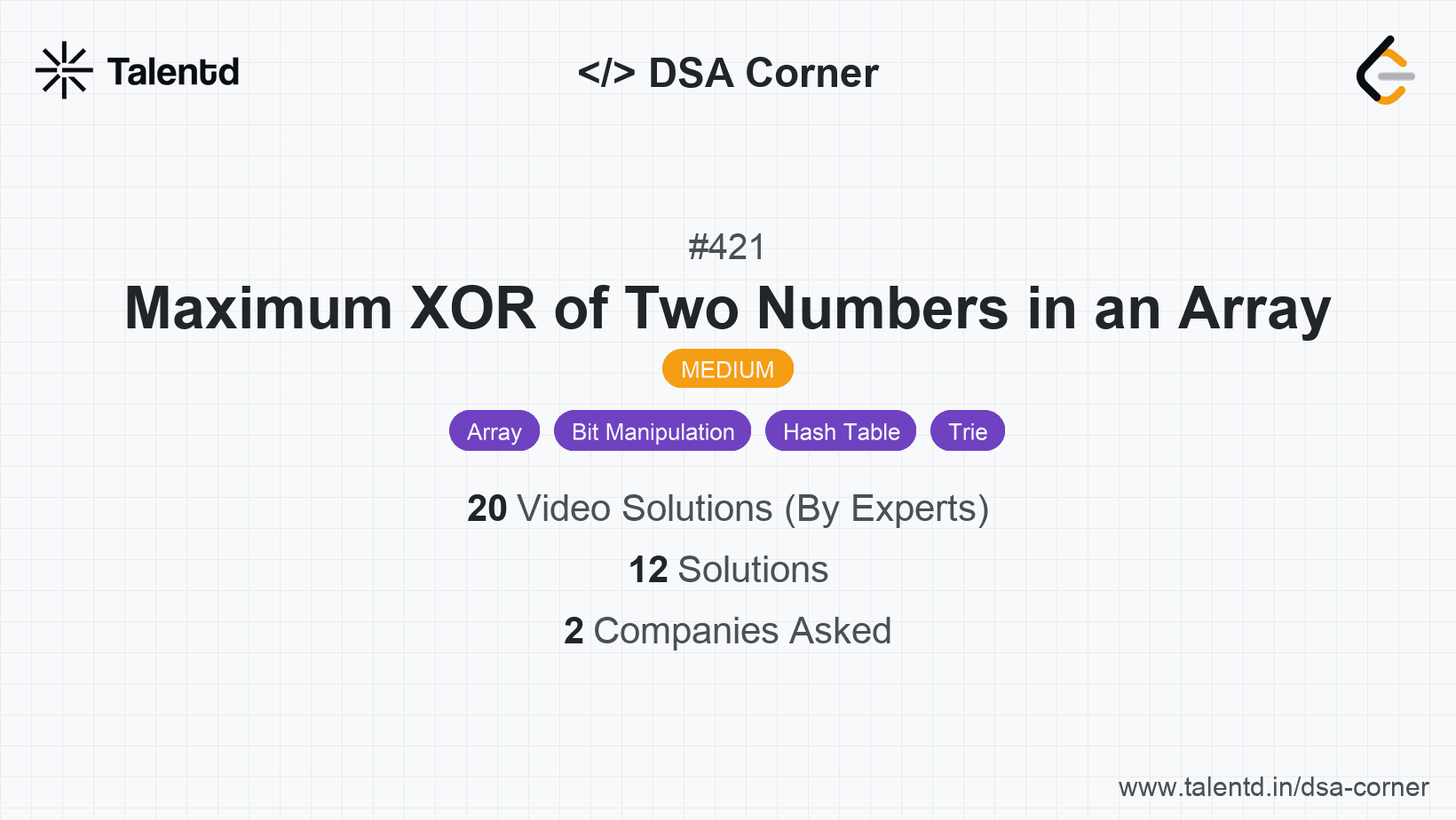
Sponsored
Sponsored
This approach involves iterating over all possible pairs of numbers in the array and calculating their XOR. We keep track of the maximum XOR value encountered during these iterations.
Though straightforward, this method is not efficient for large arrays, as it involves checking each pair of numbers.
Time Complexity: O(n^2), where n is the number of elements in the array, because it checks every pair.
Space Complexity: O(1), as it uses only a constant amount of space.
1#include <stdio.h>
2
3int findMaximumXOR(int* nums, int numsSize) {
4 int maxXor = 0;
5 for (int i = 0; i < numsSize; i++) {
6 for (int j = i; j < numsSize; j++) {
7 int xorValue = nums[i] ^ nums[j];
8 if (xorValue > maxXor) {
9 maxXor = xorValue;
10 }
11 }
12 }
13 return maxXor;
14}
15
16int main() {
17 int nums[] = {3, 10, 5, 25, 2, 8};
18 int numsSize = sizeof(nums) / sizeof(nums[0]);
19 printf("Maximum XOR: %d\n", findMaximumXOR(nums, numsSize));
20 return 0;
21}The function findMaximumXOR takes an integer array and its size as arguments. It iterates over all pairs of elements in the array, calculating the XOR for each pair and updating the maximum XOR found so far. Finally, it returns the maximum XOR value.
This approach makes use of a Trie data structure to efficiently maximize the XOR computation. By examining the binary representation of numbers, we can leverage the Trie to only explore branches that potentially maximize the XOR result.
The Trie helps in finding complementary patterns (bits) efficiently by using bit manipulation and path traversal.
Time Complexity: O(n * W), where n is the number of elements and W is the number of bits in the maximum number.
Space Complexity: O(n * W), for storing the Trie.
This solution utilizes a Java Trie to efficiently compute the maximal XOR value. Numbers are inserted into the Trie, and maximum XOR is achieved by selecting paths that provide maximum 'difference'.